Maxxis Shorty
Diameters Offered: 27.5’’ and 2.9’’
Stated Width: 2.4’’
Blister’s Measured Width: 2.46’’ (on 30 mm internal width rim)
Blister’s Measured Weight: 1,202 g (29’’ x 2.4’’, DoubleDown casing, 3C MaxxGrip rubber)
MSRP: $93–112 (varies by construction)
Reviewer: 6’, 170 lbs / 183 cm, 77.1 kg
Test Locations: Washington, British Columbia
Test Duration: 8 months

Intro
The Shorty is Maxxis’ mid-spike tire, meant for both dry and loose and wet and greasy conditions while being more versatile and not quite as fully mud-specific as their Wetscream full mud spike. The Shorty is now on its second generation, and the updated tire is both a substantial improvement over the original and a really good option for folks who get a protracted wet riding season in particular.
Back before tires like the Shorty started to crop up, it was common practice for DH racers to run cut-down mud spikes when conditions were trending wet and sloppy but weren’t so horrendous as to necessitate a full-blown spike. Trimming the knobs shorter made for a faster-rolling tire, and one that wasn’t so squirmy on roots, rocks, or patches of harder dirt, but it was also a bunch of work to trim down a full spike and not something that a lot of everyday riders were likely to bother with.
Enter the Shorty, and a number of other tires like it — including the Schwalbe Dirty Dan and Continental Argotal (more on those coming soon). The original version of the Shorty deviated a little more from the cut spike design, but the latest generation comes back full circle — and it’s a really good tire in the right conditions.
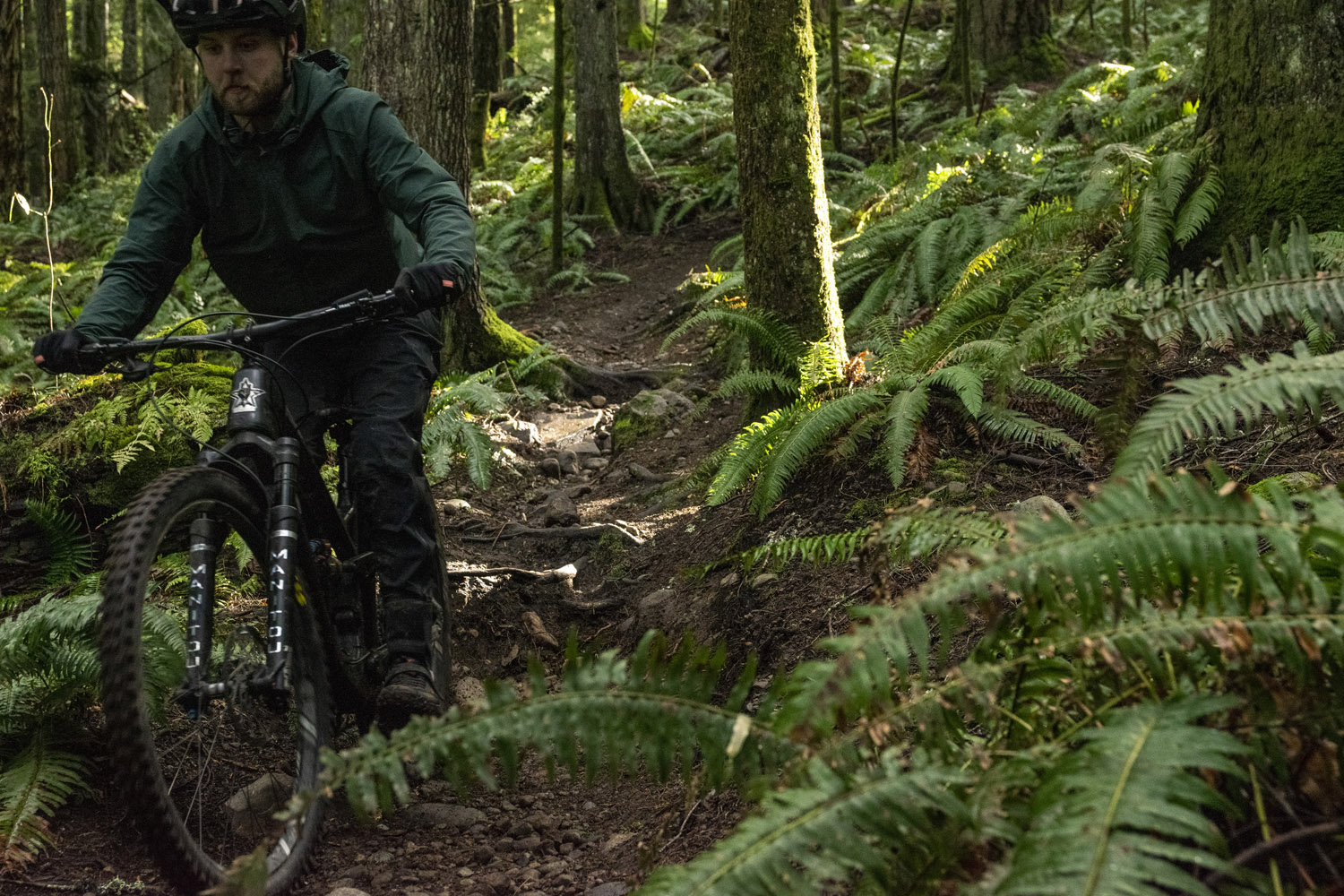
Design
The updated Shorty really does look a lot like a cut spike — it’s got the same blocky, wide-spaced knobs, but they’re just a bit shorter than true spikes, such as the Maxxis Wetscream or the Continental Hydrotal. There are only two knob shapes (center and side), both of which are nearly rectangular, though the center knobs feature a subtle ramp on the leading edge (to help reduce rolling resistance) and the side knobs have some extra buttressing on the outer side for additional support. The center knobs all feature a modest lateral sipe, while the side knobs have a similarly-sized longitudinal one.
The positioning of those knobs gets a little more complex, though. The center knobs are spaced at three different widths, forming a subtle V as the gap between the successive pairs grows wider (rows A, B, and C). The side knobs use two different spacings, with the ones located between center knob rows A and B (the narrow and medium ones) tucked in tighter, and the ones between rows B and C, and then rows C and A sharing the same slightly wider spacing. A few small ridges between the knobs are meant to break up the smooth inner surfaces in the voids between knobs to help with mud shedding.
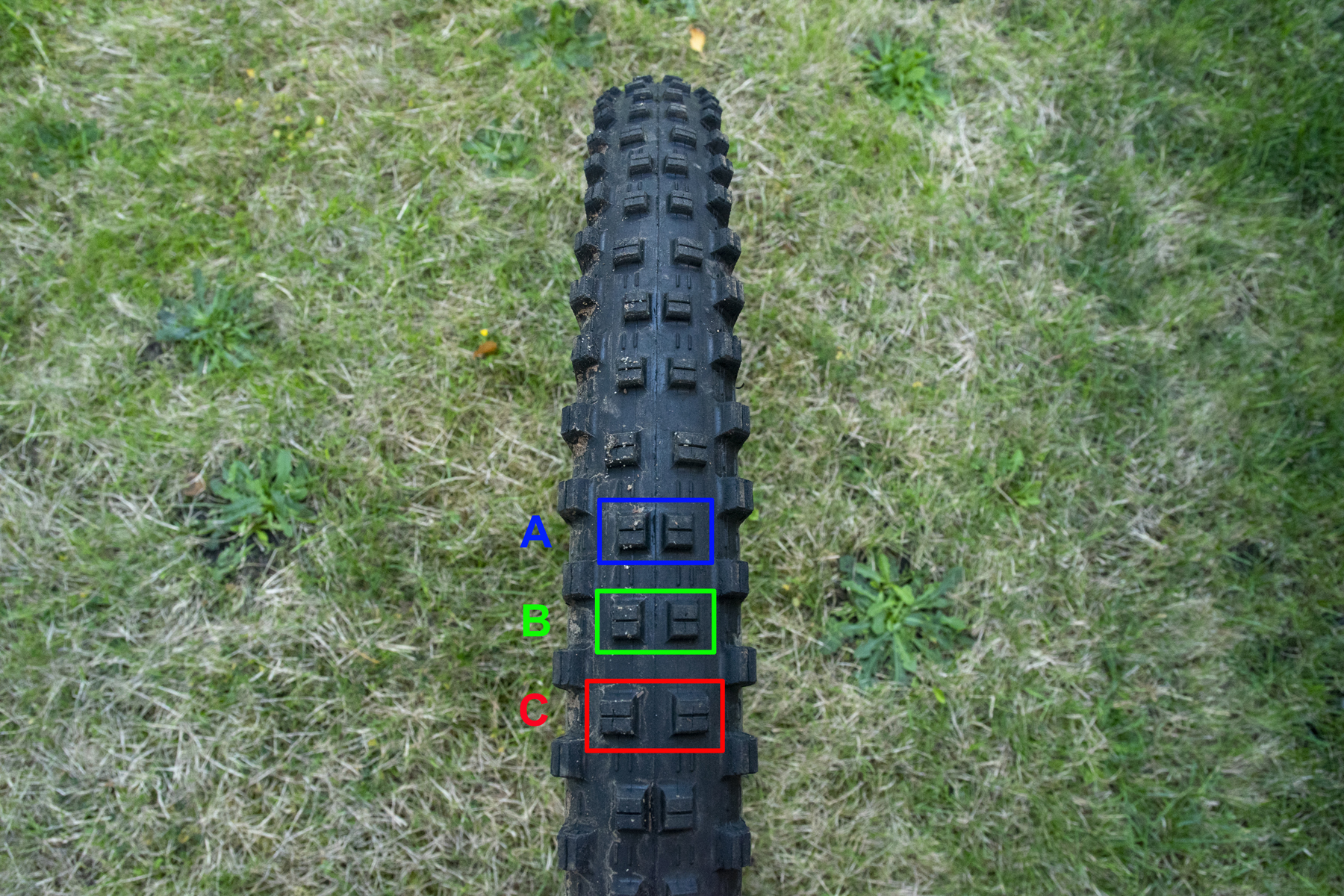
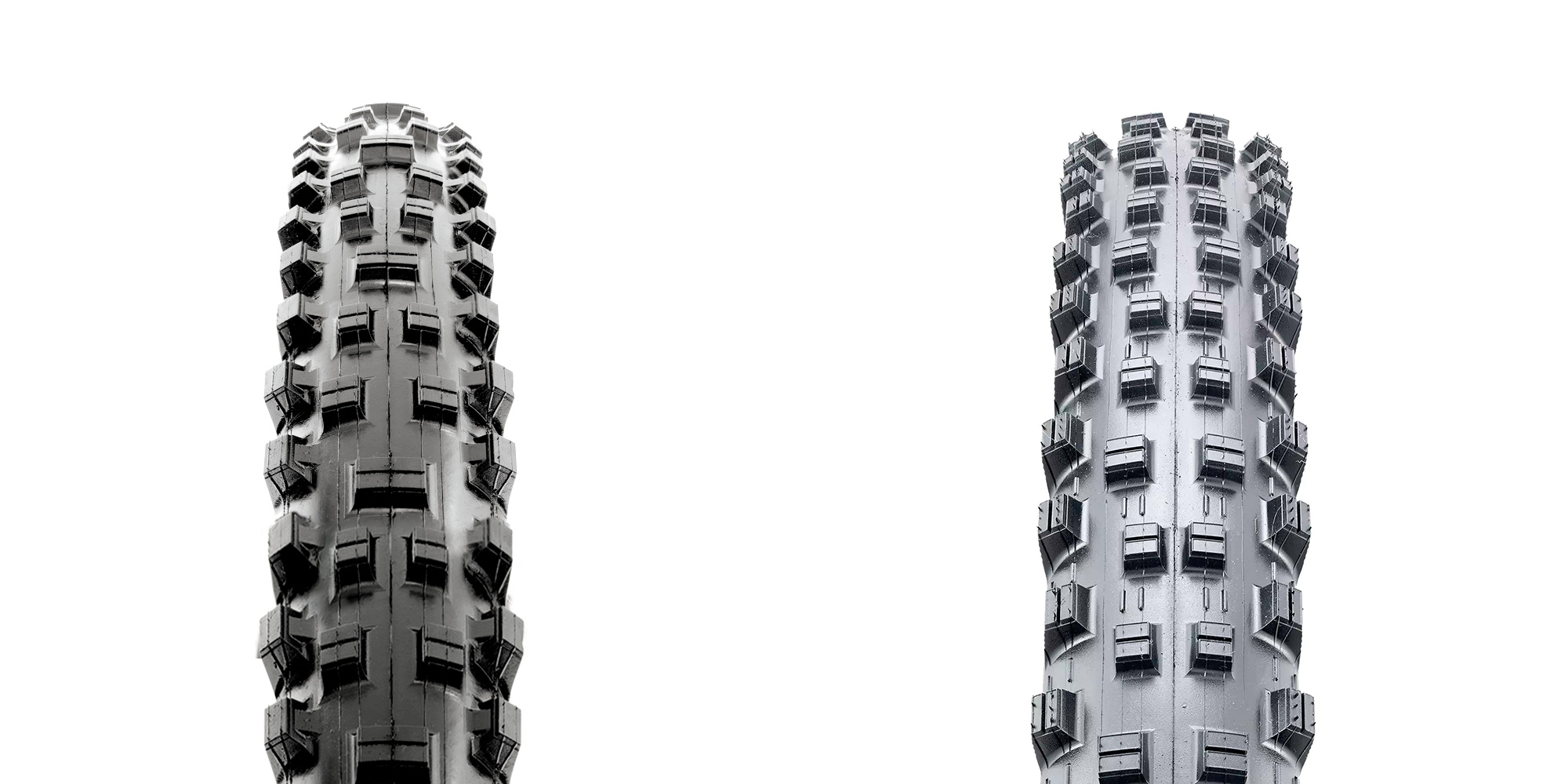
Many of Maxxis’ tire models come in a dizzying array of widths, rubber compounds, and casing options, but the list for the Shorty is comparatively modest. It’s offered in 27.5’’ and 29’’ diameters, in a 2.4’’ width only. Exo, DoubleDown, and Downhill casings are available in both diameters, with the Exo versions getting 3C MaxxTerra rubber and the beefier DoubleDown and Downhill versions coming in 3C MaxxGrip.
And for the most part, I think that makes sense. Some tire designs are more versatile in the types of riding and conditions that they accommodate, but the Shorty isn’t one of those — it’s a specific tool for a particular job, and sticky rubber and a more moderate width are both sensible calls for sloppy, wet weather riding. Wider tires both reduce frame clearance when things are clogged with mud and have more of a tendency to float around on top of softer dirt, whereas narrower tires can do a better job of cutting through to firmer dirt below where they can find more purchase. And sticky rubber helps substantially with grip on wet roots and rocks, in particular. If anything, I might prefer to see the Exo version use MaxxGrip rubber too — this isn’t a tire for people who are all that worried about rolling resistance, so might as well make it perform as well as it can — but I’d mostly prefer to run DoubleDown or DH casings anyway.
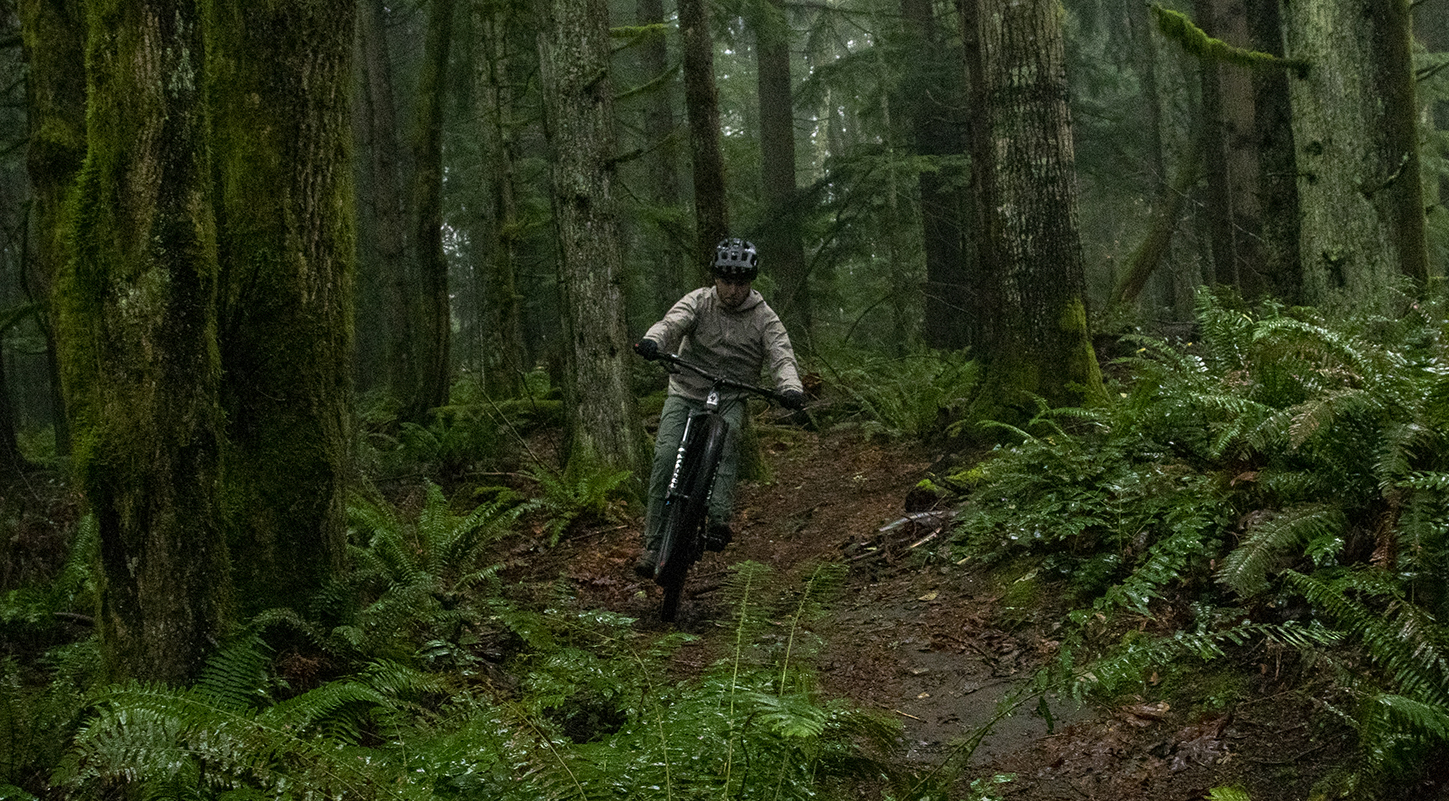
That said, Maxxis talks about the Shorty as being suited for very dry and loose conditions as well as wet and greasy ones, and those sorts of conditions tend to be trickier. On one hand, you can find very loose, dusty dirt where an open, spiky tread design does a better job of penetrating than a tighter-spaced one, but it’s pretty rare to be riding trails that are just that, and those sorts of mid-spike designs tend to be squirmy and vague on hardpacked surfaces. So how does the Shorty perform, both in the wet and when things get dusty and blown out?
On the Trail
The Shorty’s design is clearly oriented toward performance in soft, wet dirt, and that is indeed where it shines. Its cornering grip is very good when the moisture content creeps to the sloppy side of the scale, and when you inevitably reach the limit in those sorts of conditions, it breaks away and starts to drift predictably and consistently. The Shorty doesn’t feel like as much of a cheat code in super sloppy conditions as the best true mud spikes, but it’s also far more predictable and easy to manage on wet roots and rocks or other harder surfaces, where those sorts of full spikes start to feel squirmy, vague, and unpredictable. If you’re a skier, you can think of classic mud spikes as being analogous to a true reverse camber / reverse sidecut super fat powder ski, if that helps — mind-blowingly good in the right conditions, but pretty squirrelly when things get more variable. In this analogy, I guess that makes the Shorty more like a modern 11x mm underfoot powder ski — still decidedly oriented toward a specific set of conditions, but a lot more versatile outside of its true wheelhouse.
Anyway, the Shorty is clearly most in its element when the dirt is soft enough for its relatively spiky knobs to penetrate cleanly without getting deflected or squirming too dramatically, but it also does a commendable job (at least in the MaxxGrip rubber that I’ve been testing) of holding on to wet, off-camber roots and the like. And that’s really what sets it apart from true mud spikes: those tires make sense for DH racing when conditions are so horrible that you’re willing to live with tires that feel notably skittish on the odd wet root or rock in order to survive everything between them. The Shorty is the dialed-back version that’s pretty good in greasy, muddy conditions, but also respectable on wet roots and rock, and totally manageable on harder-packed dirt. Its braking performance is consistent and predictable, if not as good as all-round tires like the Maxxis Minion DHR II or Assegai unless conditions are so sloppy that those sorts of tires wind up hopelessly clogged, at which point the very good mud clearing of the Shorty becomes a real asset.

The tradeoff to the Shorty’s relatively open, spiky tread design is that it (unsurprisingly) doesn’t roll very well. Maxxis rates the Shorty as a “2 out of 5” on rolling speed (the same rating that they give the Assegai; the DHR II is a 2.5, the DHF a 3, and the Dissector a 3.5, for reference). By and large, I think that’s about right, though the type of surface that you’re on matters quite a bit. The softer the dirt is, the less noticeable the Shorty’s drag is relative to the other options (in no small part because nothing rolls very well on soft, wet dirt). The firmer things get, the more pronounced the Shorty’s drag becomes. On pavement or true hardpack, I think it’s a little slower than the Assegai; in more appropriate conditions for a tire like the Shorty, they are indeed pretty close.
Up here in the Northwest, “wet” is certainly a more regular trail condition than “dry and loose,” but we do sometimes get treated to the latter in late summer. When those sorts of conditions roll around, they tend to manifest as full-on moon dust, with essentially nothing holding the loose layer together even a little bit, and at least in that flavor of dry and loose, I’m less fond of the Shorty. Big, open, spiky tread works well when the dirt is generally soft, but still has a bit going on to bind it together; when that evaporates, I generally prefer a tighter-spaced tread with wider, blockier knobs to act as paddles and catch as much of the dirt as possible — the Continental Kryptotal Front (review coming soon) being a great example. And while the Shorty isn’t terrible in those sorts of conditions, I don’t find its open, spiky tread to be particularly advantageous — just about anything sinks into moon dust, and clearing mud out from the tire obviously isn’t a concern — and I prefer something that brakes better, in particular.
Compared to the prior-generation Shorty, the new one does give up a little bit of braking traction but is much more predictable on wet, off-camber roots and rocks, and is also more consistent and less vague feeling on true hardpack. Neither is a good hardpack tire, to be sure, but the newer generation Shorty is a lot more passable when you get the forecast wrong, or just come across a firmer section.
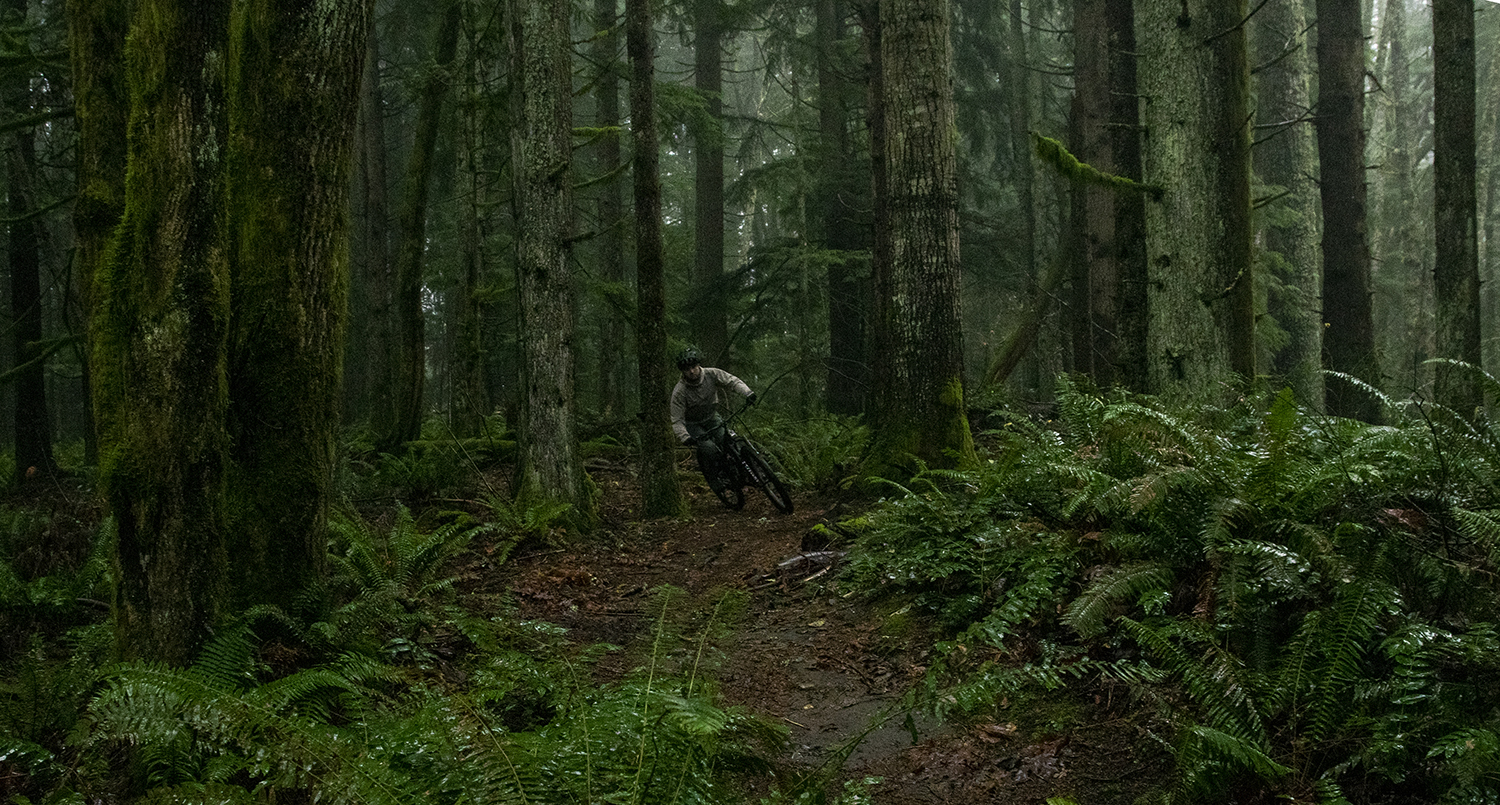
For the most part, I’ve preferred to run the Shorty as a front tire paired with something faster rolling and with more supportive knobs in the rear — primarily a Minion DHR II. The Shorty is a viable rear tire if you really want to prioritize cornering traction in soft dirt at the expense of some rolling resistance and braking traction, but I’m more willing to let the back wheel slide around a bit, and the Shorty’s tendency to feel squirmy and vague on harder surfaces feels more pronounced with it mounted on the rear (which makes sense, given that the rear wheel tends to be more heavily weighted than the front). For my preferences, those tradeoffs aren’t worth it most of the time.
But I’m a big fan of the Shorty as a front tire for the rainy season around here. It does a very good job of balancing cornering traction in soft, wet soil with respectable performance on wet roots and rocks, in particular — traits that often tend to be in conflict with each other — while also braking reasonably well. The Shorty is a bit of a specialized tool that won’t make sense in all locales or all conditions, but if you live somewhere where it’s wet for a significant portion of the year and are willing to swap in a more appropriate tire once things dry out, it’s a winner.

Bottom Line
The Maxxis Shorty is a somewhat specialized tool that works best in wet, soft dirt, but it also does a good job of balancing mud performance with being more versatile and predictable in firmer conditions than most full-on mud spikes. That’s a good middle ground, particularly as a front tire, for the wet season in places where the riding season includes one. The Shorty doesn’t roll terribly well and does feel somewhat squirmy and vague on harder surfaces, but it’s far better in those regards than true mud spikes, and if you live in a place where wet weather riding fills a significant portion of the calendar and are willing to swap tires seasonally, they’re worth having in rotation.

How about a test of the Specialized Hillbilly? They are the same concept, it would be interesting to see how they differ once the rubber hits the ground.
About what time of year in the PNW would you typically swap the Shorty out for an Assegai? April? May?